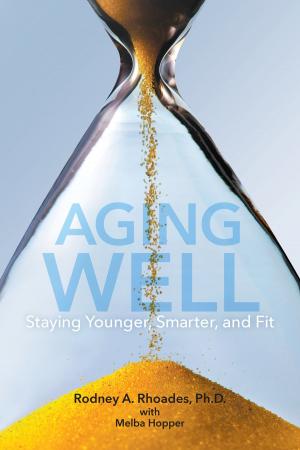The Wellness Club: A Journey to Health Beyond Healthcare
Nonfiction, Health & Well Being, Health, Health Care Issues| Author: | David G. Adamson | ISBN: | 9781301158102 |
| Publisher: | David G. Adamson | Publication: | April 23, 2013 |
| Imprint: | Smashwords Edition | Language: | English |
| Author: | David G. Adamson |
| ISBN: | 9781301158102 |
| Publisher: | David G. Adamson |
| Publication: | April 23, 2013 |
| Imprint: | Smashwords Edition |
| Language: | English |
This is the true story of a group of employees in a community health center who started a wellness club to learn more about the typical health topics like exercise, nutrition, and stress reduction. Although they were part of the U.S. healthcare system, they weren’t any healthier than the general population and wondered why. Like workers in every industry, for the past decade they had seen their wages go to higher insurance premiums and deductibles.
Wellness Club presentations and discussions inevitably lead them into controversial territory, starting with the healthcare system itself, which is too expensive and not always effective for the cost, especially when compared to other advanced industrial countries.
And they also discovered that there are powerful corporate and government influences that make it challenging, and at times impossible, for them and their families to be well and prevent the debilitating health conditions they witnessed every day, such as obesity, diabetes, and hypertension.
During weekly meetings, they slowly but surely realized that while it was tempting to blame the national healthcare crisis on soulless corporations and inept government agencies, they shared equal responsibility. Those unhealthy forces had been unleashed in their homes, workplace and communities by their own ignorance, indifference or laziness.
They gathered a lot of cutting edge information about their bodies, food and supplements, relaxation techniques, and different ways to exercise. They learned about organic versus inorganic foods, macronutrients, the lipid hypothesis, vegetable versus animal protein, why not all fats are bad, the vagus nerve, high intensity training, sugar and fructose, body fat, chocolate as an aphrodisiac and tranquilizer, inflammation, willpower, paradigm wars, women and weight lifting, self-efficacy, food cues, phytonutrients, the relaxation response, food labels, Buddha, obesity is not a death sentence, activities of daily living, and many other topics.
They watched lectures on the Web by some of the leading health researchers in the nation, exercise demonstrations by personal trainers, and inspiring stories of people who had successfully changed their lives despite huge obstacles.
The health information came fast and furious, and the book includes direct links to the resources and videos they found inspiring or enlightening.
The most important topic the Wellness Club explored over and over was how to achieve personal change and find a sustainable path to wellness. Members eventually understood they would have to save their own health because no pill or institution was going to do it for them. They learned about changing old habits, social contagion, techniques to avoid poor food choices, and how to seek and find support from other people. It would not be one big painful leap, but a series of steps that would eventually be condensed into ten Wellrules.
Because stories of real people pursuing wellness are interwoven throughout every chapter, parts of the book are funny, some parts sad. Some reached their goals, some failed. Some were too afraid of failure to ever set goals. The pursuit of wellness would create tension between significant others, family members, or co-workers. It would be surprising and disturbing to realize they and their families might have addictions to sugar, fat and salt, and that these were enabled in their homes and workplaces.
The Wellness Club concluded there needs to be a radical re-prioritizing of American values to place long-term public health and well-being above short-term private profits. Meantime, in their private lives many would not wait. They would journey to wellness, despite all odds.
This is the true story of a group of employees in a community health center who started a wellness club to learn more about the typical health topics like exercise, nutrition, and stress reduction. Although they were part of the U.S. healthcare system, they weren’t any healthier than the general population and wondered why. Like workers in every industry, for the past decade they had seen their wages go to higher insurance premiums and deductibles.
Wellness Club presentations and discussions inevitably lead them into controversial territory, starting with the healthcare system itself, which is too expensive and not always effective for the cost, especially when compared to other advanced industrial countries.
And they also discovered that there are powerful corporate and government influences that make it challenging, and at times impossible, for them and their families to be well and prevent the debilitating health conditions they witnessed every day, such as obesity, diabetes, and hypertension.
During weekly meetings, they slowly but surely realized that while it was tempting to blame the national healthcare crisis on soulless corporations and inept government agencies, they shared equal responsibility. Those unhealthy forces had been unleashed in their homes, workplace and communities by their own ignorance, indifference or laziness.
They gathered a lot of cutting edge information about their bodies, food and supplements, relaxation techniques, and different ways to exercise. They learned about organic versus inorganic foods, macronutrients, the lipid hypothesis, vegetable versus animal protein, why not all fats are bad, the vagus nerve, high intensity training, sugar and fructose, body fat, chocolate as an aphrodisiac and tranquilizer, inflammation, willpower, paradigm wars, women and weight lifting, self-efficacy, food cues, phytonutrients, the relaxation response, food labels, Buddha, obesity is not a death sentence, activities of daily living, and many other topics.
They watched lectures on the Web by some of the leading health researchers in the nation, exercise demonstrations by personal trainers, and inspiring stories of people who had successfully changed their lives despite huge obstacles.
The health information came fast and furious, and the book includes direct links to the resources and videos they found inspiring or enlightening.
The most important topic the Wellness Club explored over and over was how to achieve personal change and find a sustainable path to wellness. Members eventually understood they would have to save their own health because no pill or institution was going to do it for them. They learned about changing old habits, social contagion, techniques to avoid poor food choices, and how to seek and find support from other people. It would not be one big painful leap, but a series of steps that would eventually be condensed into ten Wellrules.
Because stories of real people pursuing wellness are interwoven throughout every chapter, parts of the book are funny, some parts sad. Some reached their goals, some failed. Some were too afraid of failure to ever set goals. The pursuit of wellness would create tension between significant others, family members, or co-workers. It would be surprising and disturbing to realize they and their families might have addictions to sugar, fat and salt, and that these were enabled in their homes and workplaces.
The Wellness Club concluded there needs to be a radical re-prioritizing of American values to place long-term public health and well-being above short-term private profits. Meantime, in their private lives many would not wait. They would journey to wellness, despite all odds.















